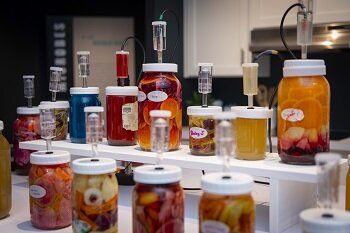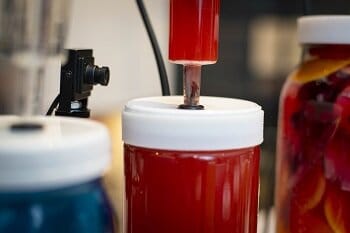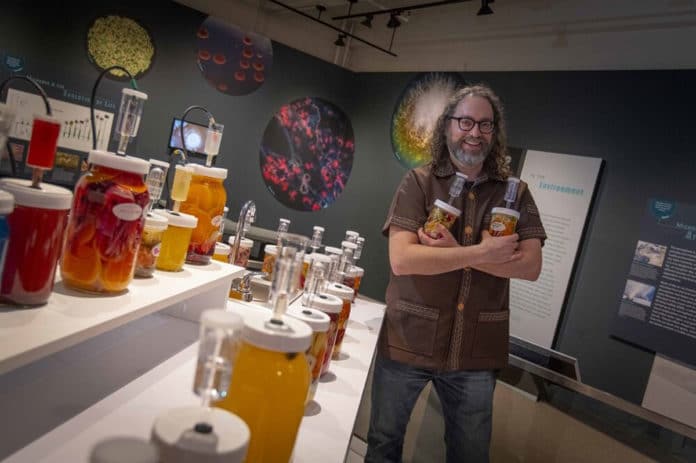Fermentation is an ancient technique of preserving food. The process is still used today to produce foods like wine, cheese, sauerkraut, yogurt, and kombucha.
Besides offering tasty foods, the process can now relive our ears as well as the brain by treating with music.
Based on the exploration of Joshua Rosenstock, associate professor of Interactive Media and Game Development and Humanities and Arts, it turns out that the process of fermentation can be utilized to make spontaneous tunes. Rosenstock has built multiple art exhibits called Fermentophone to showcase how fermentation can make music.
Rosenstock said, “It’s a project I’ve been working on for the past five years. It’s open-ended art with a serendipitous result.“
How Fermentaphone create music?
At first, different fruits and veggies are placed in glass jars and fermented following the time. As fermentation kicks off, the yeast—or bacteria—present in the food chows down on the foods’ sugars, which results in the release of carbon dioxide bubbles.
The release of these bubbles—or burps, which is picked up by underwater microphones. A computer processes the sounds, and, with the assistance of calculations plugged in by Rosenstock, electronic music is created.

Rosenstock and Fermentophone are headed to the Harvard Museum of Natural History on Saturday, Feb. 8, for its I <3 Science exhibit, which is open to the public until Feb. 23. Here, along with two “Meet the Artist” events at the exhibit on Feb. 18, 10–11 a.m., and Feb. 22, 2–3 p.m., Rosenstock will present a multimedia installation of more than 50 “living food-art” jars, created in collaboration with members of the local community.
Influenced by the improvisational idea of jazz, Rosenstock imagines the Fermentophone as a creative partnership among himself and the microorganisms. He sets up the pitch and tune of the music. However, the microbes —and how gradually or rapidly they ferment—control the rhythm of each note.
Rosenstock said, “Different foods provide different grooves. Fruits, which have more sugars, tend to make a more vigorous rhythm, whereas vegetables, which have less sugar, are mellower.”

“Light and temperature can influence the rate of fermentation—and the resulting music, too. The more heat and light there is in the room while fermentation is happening, the more activity there is.”
Rosenstock said, “And, for those wondering, you technically can eat the fermented foods. My food is food, after all.”
“The same microbes that help make delicious foods and drinks also make up an important part of the human microbiome. I hope to use Fermentophone’s music to draw attention to our symbiotic relationship with our microbial partners.”
